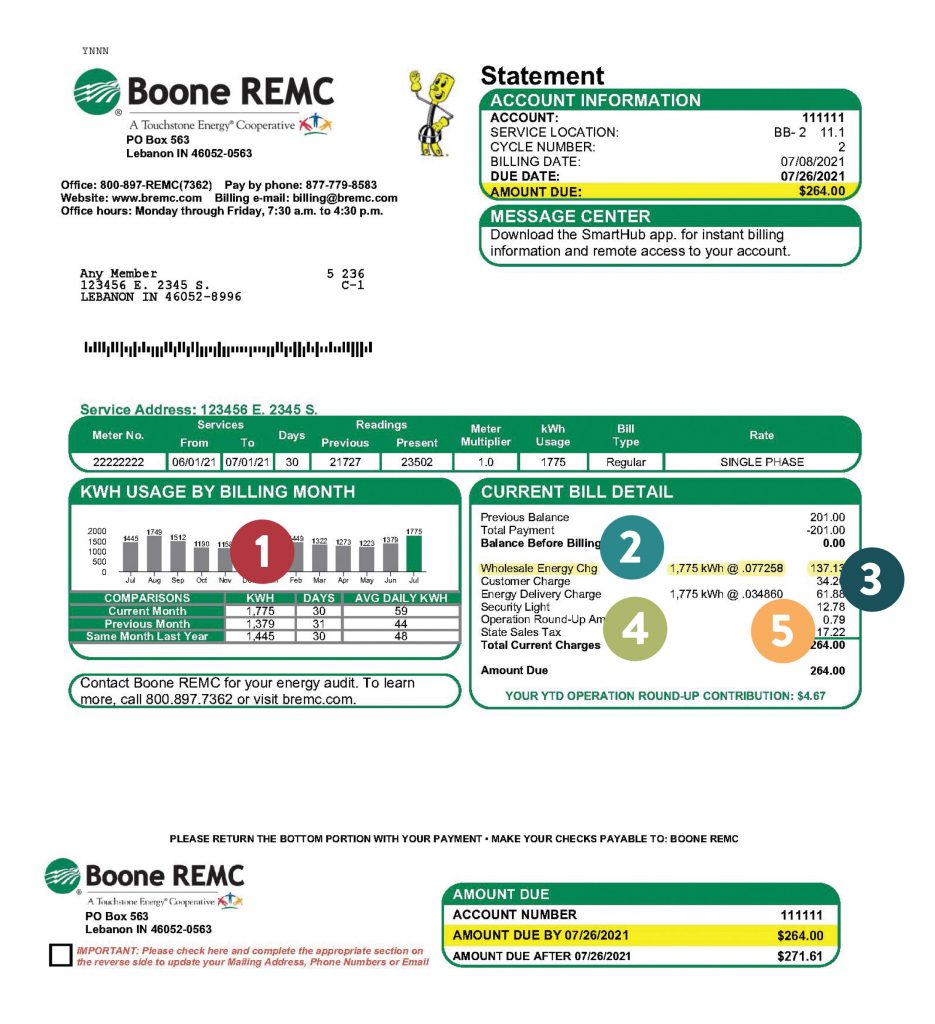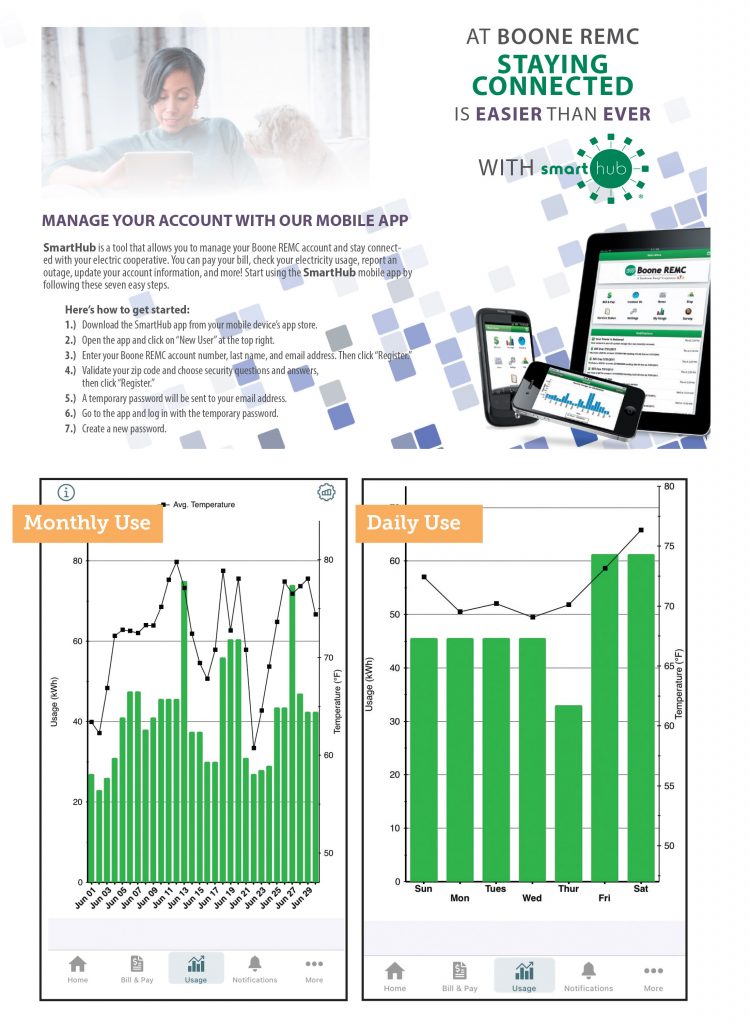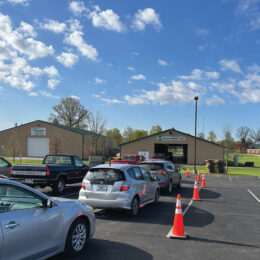
Line by line: what’s the breakdown?
- This graph shows your use comparison for the last 13 months. This is a great place to analyze and determine what has changed from month to month. Did you have guests? Was the weather hotter? What changed? This becomes even more effective if you use it along with the daily tracker in the SmartHub app.
- Wholesale energy charges include the costs associated with the generation of electricity and the transmission of electricity over high voltage power lines by our wholesale power provider, Wabash Valley Power Alliance (WVPA). It is figured by multiplying the kilowatt-hours used during your current billing cycle by the current rate listed on your billing statement.
- The customer charge is a fixed monthly fee intended to cover the costs of making electricity available at your location whenever you need it, regardless of how much or how little energy you actually use. It includes things like substations, poles and wires, labor, vehicles, and offices. It also includes annual capital investments of $17 million – $18 million to improve reliability and service.
- The energy delivery charge is the cost to deliver electricity to your location and is calculated by multiplying the kilowatt-hours used during your current billing cycle by the current rate listed on your billing statement.
- Other charges might include a security light, Operation Round Up, and/or sales tax, when applicable. If participating in Operation Round Up, your bill will be rounded to the next highest dollar each month. The extra cents collected are put into a charitable fund, from which an independent board awards community grants.

Monthly Use SmartHub will show monthly use, so you can pay attention to how the temperature and daily routine affect power use. Simple tips like unplugging electronics and shutting off lights add up and monitering changes can help to motivate change.
Daily Use Smart Hub can show a member his/her daily use. Weekends can show more use because a family is home more and using more electricity. Starting to analyze use throughout the week can lead to small change, like washing with cold water, taking shorter showers or grilling out. The power use will cost less long term.



